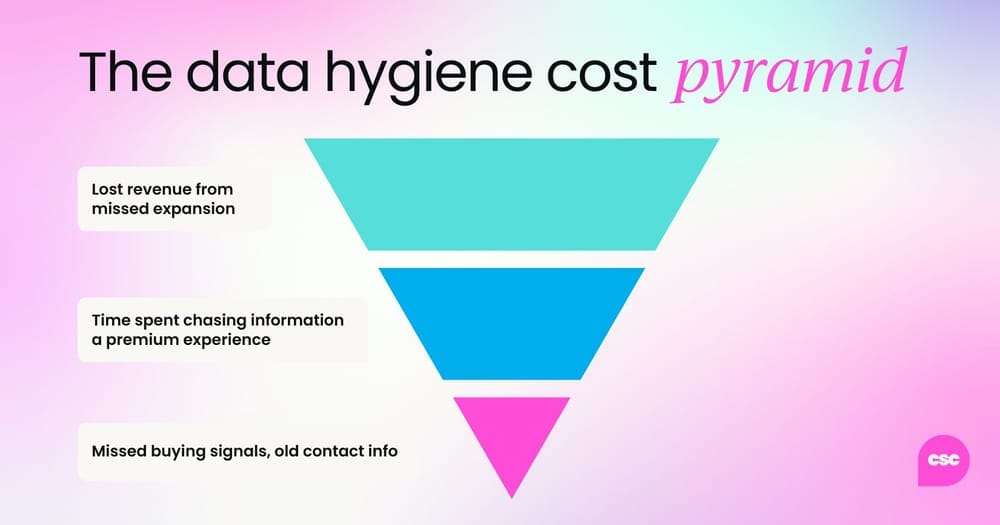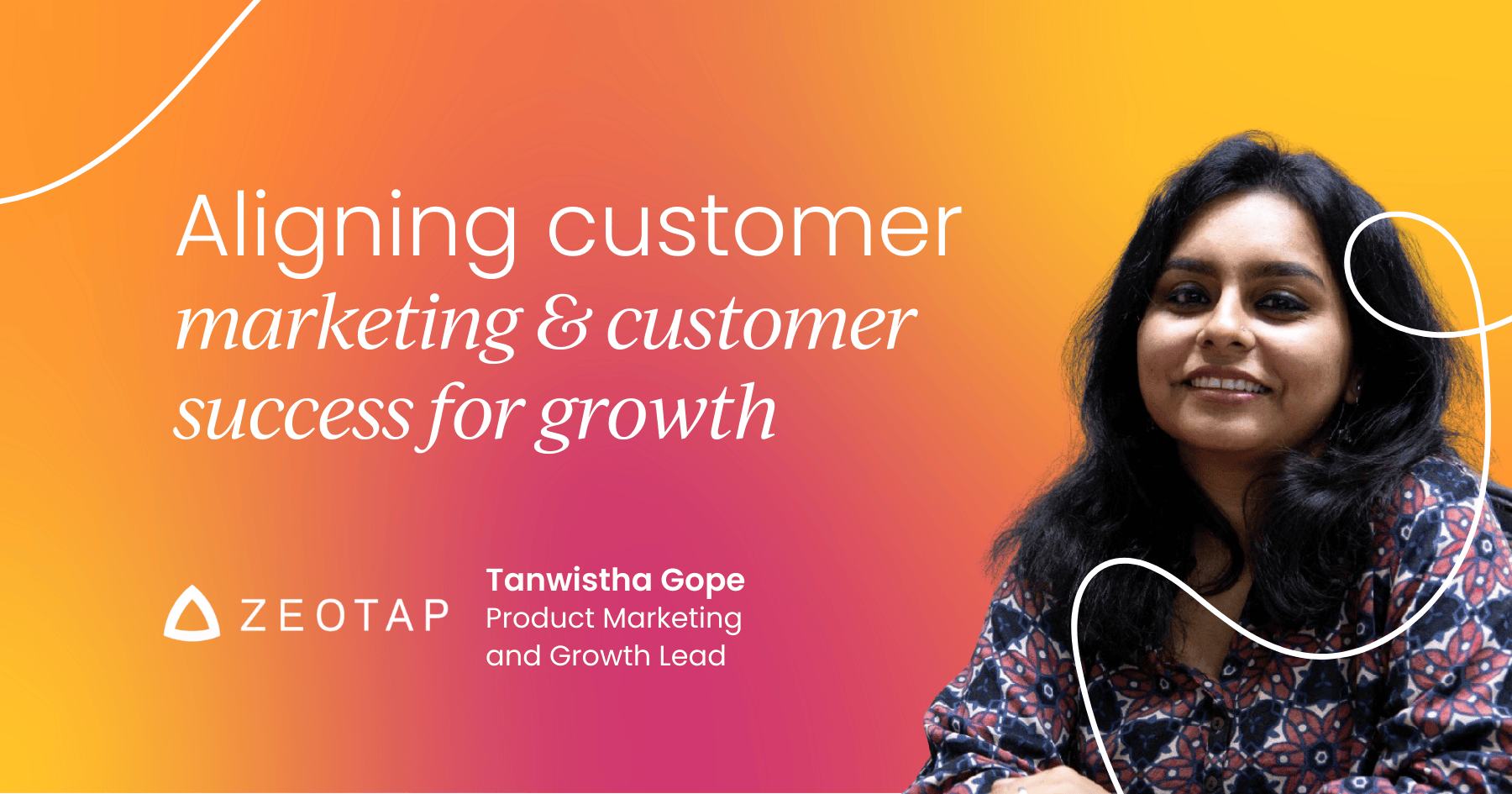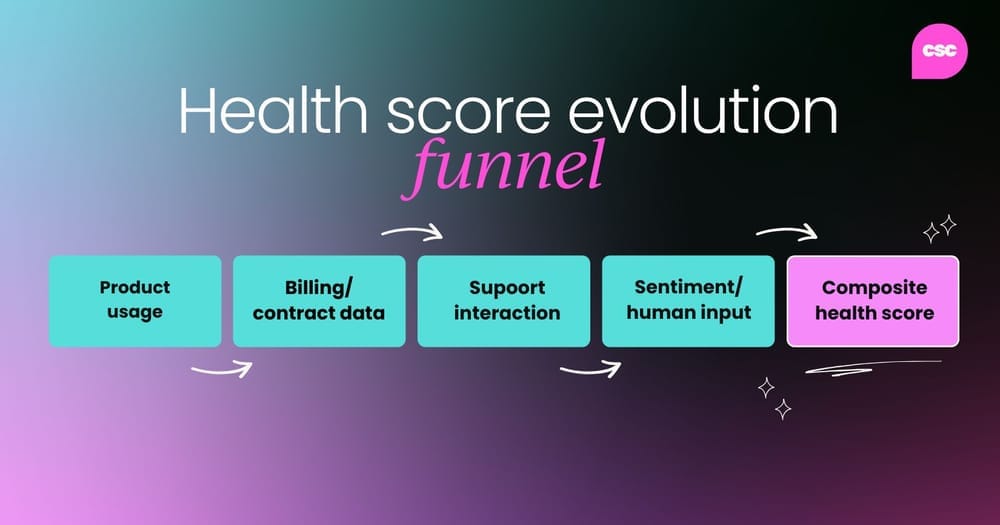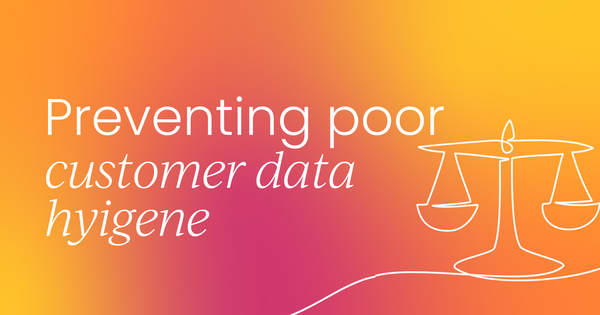It’s a sinking feeling you’re probably trying to ignore. That little voice in your head going: “Our data might be… a bit of a mess”? Hate to break it to you, but it’s probably right. In fact, 70% of revenue leaders lack confidence in their CRM data.
And it’s not just a housekeeping issue; it can affect everything from pipeline accuracy to customer experience to retention.
If you’re thinking, “Sure, our data’s not great, but we’re just about getting by…” let this be your wake-up call. The following three things should not be happening with clean customer data:
- You send emails that don’t match the customer’s region.
- Important bug reports fall through the cracks.
- Your team’s insights arrive after the customer churns.
Good customer data hygiene doesn’t just prevent these horrors from occurring. It doesn’t just save a mountain of support tickets or bolster your Customer Success Managers’ (CSM) reputation.
While all three of those things are good, clean CRM data offers much more: it sets your entire business ecosystem up for success.
The root cause of dirty CRM data
Let’s clear one thing up: dirty data within businesses is pervasive, so before we start, you’re not alone.
It’s surprisingly common for teams to have customer data scattered across 5–10 – maybe even 20 – different platforms, including CRMs, support tools, billing systems, and product databases.
For example, 20% of data might live in your CRM, 35% in your platform, and 10% in billing. This creates a world where different departments look at things differently and have disparate data sets across their tooling.
That kind of fragmentation creates confusion fast. A fundamental issue is the lack of a common language within the business, preventing people from talking about what's happening with their customers in a unified way. Different teams build their own definitions of what a “customer” means. Sales might count logos. CS might look at users. Finance sees contracts. Nobody’s aligned whatsoever.
And this isn't theoretical. While working as the Head of Marketing at Syncari, Aaron Langraf revealed that one of their clients suffered from poor data hygiene so severe, they reportedly spent three months trying to align their go-to-market divisions on the definition of “an account.” Three months. Over a single definition.
But even when modern SaaS platforms claim to offer integrations, the connections are often half-baked.
Dev resources go toward building product features, not data plumbing. This exacerbates the problem, leading to a "siloed thing over here" that's hard to connect to what individual teams care about. So you end up with a patchwork stack where marketing can’t see usage data, CS can’t see billing, and sales can’t see anything without hunting for it.
And the larger your company grows, the more those silos harden. Product data lives with engineering. Usage data is locked in separate databases, making it difficult for marketing, sales, and customer success to access it. Everyone feels unnecessarily aimless.

The operational repercussions
Customer success
Many CS teams don’t have the ops resources they need to get reliable data.
It was revealed at Customer Success Summit San Francisco 2022that a significant portion of CS leaders don't have dedicated CS Opsresources for data, often needing to "beg, borrow, and steal" from sales or RevOps. So they’re left manually trawling across tools like Stripe, Salesforce, and Intercom – all just to prep for a client call.
And when data takes too long to access, or insights land after the fact, teams shift from being proactive to reactive. They can’t confidently prioritize accounts, and CS leaders struggle to build a clear picture or put data behind their team's effectiveness. (Can you see how this is snowballing into a nightmare?)
Left untreated, dirty data can even lead to burnout – not from the work itself, but from working without clear direction.
Sales and account management
It goes without saying that sales is a time game. While in B2B, it’s common for sales lifecycles to last for 6–12 months, that doesn’t negate the fact that speed matters in sales. But without consolidated, up-to-date customer data, it’s harder to act fast – or to even act right.
Account Managers might miss signals that a customer’s ready for expansion. Or they might not even realize that the key decision-maker left the company six months ago. When you can’t trust your customer insights, it’s easy to miss out on meaningful revenue from your existing base.
In fact, poor data hygiene carries a hefty price tag, with Gartner estimating that organizations lose an average of $12.9 million annually due to bad data.

Marketing
Marketing is often left trying to piece together audience segments with incomplete inputs. That’s how you end up sending US customers non-US content, or sending daily emails to users already overwhelmed by onboarding.
Without clear visibility into usage or account health, intent signals can get missed. Campaigns underperform. And messaging ends up being reactive instead of genuinely helpful.
And let’s not forget the soft costs: damaged brand trust, internal inefficiencies, and the constant “we can’t segment that list because the data’s a mess” loop. These are major ramifications, which are (you guessed it) entirely avoidable.
So, while each team feels the pain in slightly different ways, it’s all tied to the same thing: customer data that’s scattered, stale, or just not easily accessible.
With poor data management, the long-standing industry goal of a "single source of truth" is proven elusive. Attempts to dump everything into CRM or data warehouses fail because data isn't accessible to all who need it, or insights decay before they can be acted upon.

What prevents companies from achieving better data hygiene?
There are a number of clerical errors that seem relatively harmless when looked at in isolation, but they’re causing your CRM data to seriously underperform.
But here’s the issue: everyone knows data quality matters, so why is it still so hard to fix?
There are a few common blockers:
Limited resources
Especially for earlier-stage companies, fixing data issues can feel like a “nice to have,” or something that’ll get sorted out down the line. Those are pretty famous last words, considering most things are pretty easy to ignore until they break!
Complexity and volume of data
Modern tech stacks are highly bespoke, and stitching together that amount of data (like accounts, opportunities, contacts, and unique product usage data) is a big lift. Many teams use 30–50 different platforms. Unifying
Quality control issues
Even if you can pull the data, it might be inconsistent or out of date (data decays at an average rate of 30% per year). There are also inherent data security risks when handling vast amounts of customer information.
Misalignment across teams
Different functional teams often have different opinions on who their "best customer" is, leading them to allocate resources to initiatives that serve their department rather than the broader organizational value. Not everyone agrees on what “healthy” looks like. So they pull in different directions.
And because no one function owns the full customer experience, data hygiene often becomes everyone’s responsibility… and no one’s priority.

Why good data equals better outcomes
Here’s the good news: when companies take the time to get their customer data in shape, the payoff is very real.
Proactive engagement
Instead of reacting to churn or upsell signals after the fact, you can spot and act on them earlier. It creates more natural, relevant touchpoints and better relationships.
Better customer visibility
Not everyone needs to be in one tool. But everyone does need access to the right data. That’s where the idea of “distributed truth” comes in. Each team works in its own system, but the most important fields are synced across.
Better alignment across functions
When all teams share the same understanding of customer health, you get smoother handoffs and clearer focus. Marketing builds better segments. Sales passes clean intel to CS. CS identifies cross-sellopportunities earlier. It all clicks into place.
Clearer value realization
When your data’s clean, it becomes much easier to track how customers are using your product and whether they’re getting value. You can move past vanity metrics and toward measuring actual outcomes.
And the impact isn’t just on your customers. It flows through to your employees and bottom line, too:
- Empowered teams that know where to focus
- More efficient use of tools and resources
- Stronger retention and expansion performance
“McKinsey finds that improving customer satisfaction by 20% can lift cross‑sell rates by 15–25%, and roughly 80% of value creation comes from unlocking new revenue from existing customers—an outcome made far more achievable through clean, high‑quality data.”

5 ways to avoid the pitfalls and strategize for the future
Fixing customer data hygiene doesn’t mean ripping everything out or starting over.
But it does require a clear strategy, one that embraces new ways of thinking, smarter tooling, and a more unified view of your customer.
1. Prioritize what matters
Instead of trying to collect all data, decide what data is most impactful for your customers and business goals. Try to pick 3–5 key data points that really matter for your team. Track them. Test their impact. Get rid of any data that doesn't align with insights about customer health.
This was a hard-earned lesson for Patti Zack, former Chief Customer Officer at FiscalNote. In her keynote at Customer Success Summit Las Vegas 2023, she recalled how her team got stuck measuring the wrong things:
“We were spending a ton of time tagging and naming events in our flagship product – every button click, every interaction – just so someone could prove the customer was ‘using it a lot.’ But honestly, who cares if they clicked a button? That told us nothing about customer health, and it wasn’t useful to the customer either. It was just wasted effort from our product team.”
Her advice? Be ruthless about what’s actually meaningful, and make sure the data you’re collecting has a purpose.
2. Align on shared definitions
Every team needs to be speaking the same language, a “lingua franca,” when it comes to North Star metrics. That means defining key terms like active user, engaged account, or even health score – and making sure those definitions are agreed upon and documented across teams.
Without this shared understanding, data loses its power. So, write it down!
During a panel discussion at Customer Success Summit Amsterdam, Isabel Lobato, Account Executive at Miro, highlighted this exact challenge:
“At Miro, we use tools like Looker so that sales and CS can see the same data. That part is very objective — we’re literally looking at the same report. But the human side of customer success adds important context. Things like customer sentiment or long-term value… you can’t get that from a dashboard. That’s where CS steps in.”
3. Sync across systems, don’t centralize everything
Trying to stuff every team into one system rarely works. Instead, smart orgs focus on syncing what matters across the tools people already use – that’s the idea behind what Adam Landgraf refers to as “distributed truth.”
Aaron Landgraf, former Head of Marketing at Syncari, shared how this looked in real life:
“We brought Jira tickets into Salesforce, because that’s where I work most. Now, when I look at a customer account, I can see their product enhancement requests, Zendesk issues – what’s been resolved, what hasn’t – their NPS score, ARR, all in one place. So if I’ve got a QBR coming up, I’m not spending two hours chasing data across five tools. It’s all synced. I get the snapshot I need, fast.”
4. Build a health score worth using
Too many health scores are glorified traffic lights — red/yellow/green dashboards that look tidy but say very little. A good health score should be proprietary, meaning it reflects your product’s unique value. It should pull signals from multiple functions, be weighted by what truly drives success, and evolve as your product and customers do.

A health score should be a source of truth — not a traffic light system that everyone ignores.
Patti Zack, former Chief Customer Officer at FiscalNote, explained why she went all-in on building a comprehensive health score:
“A customer health score is your proprietary metric. You can’t take Salesforce’s health score and apply it to HubSpot. It has to be yours — quantifiable and comprehensive. That means pulling data from finance, marketing, product, sales, and success. It’s the radar for your team. You wouldn’t fly a plane without radar — but a lot of companies are flying blind.”
Make sure your score reflects how your product delivers value. Weight the right metrics. And don’t forget to layer in the human perspective — especially when it comes to sentiment, strategic fit, or renewal risk.
5. Operationalize your data and keep evolving
Clean data isn’t a one-off project. It needs ownership, continuous upkeep, and feedback loops that make it better over time. It’s a living, breathing thing.
Too often, teams build the model and walk away. Who owns your data model? Who's responsible for updating definitions, surfacing anomalies, and turning customer feedback into action? If the answer is “kind of everyone,” that’s a red flag.
Patti Zack, former Chief Customer Officer at FiscalNote, made this crystal clear:
“Data is all about iteration. What happens when your product changes? (I hope your product is changing.) This actually happened at FiscalNote. We delivered on an enhancement called Composed Page, and we realized that that was actually more important to our customers and created a stickier value for our product – and so we amended our health score to add it.”
Once you have clean data and aligned metrics, you can start to predict, not just report.
Let’s reflect
We’ll wager that reading about data hygiene probably wasn’t at the top of your list today. But if you’ve made it this far, you already know the stakes: clean, aligned, and operationalized customer data is foundational to delivering value, retaining customers, and scaling sustainably.
So here’s your challenge:
- What data are you collecting today that actually drives decisions – and what’s just noise?
- Is there one shared definition of customer health across your org, or five?
And, perhaps, most importantly:
- Who owns your data model, and are they actively evolving it as your product and customers change?
If these questions made you sweat a little, you’re not alone. But that’s also your cue to take action.
Your three-step action plan
- Audit your data sources: Identify your top 3–5 metrics for customer health and business outcomes. Cut the clutter.
- Write down shared definitions: Not in someone’s head. Not in Slack. A doc. A single source of (linguistic) truth.
- Assign ownership and iterate: Treat your data model like a product: assign a Product Manager, gather feedback, and evolve it as things change.




 Follow us on LinkedIn
Follow us on LinkedIn






